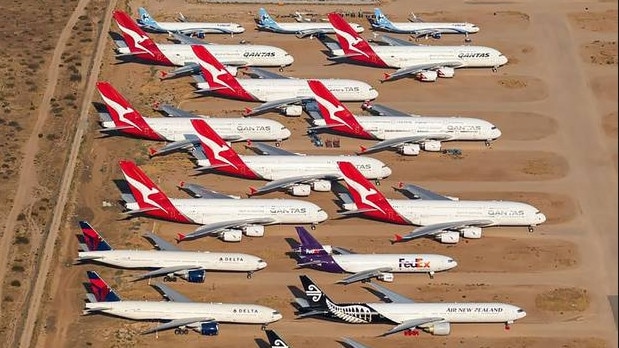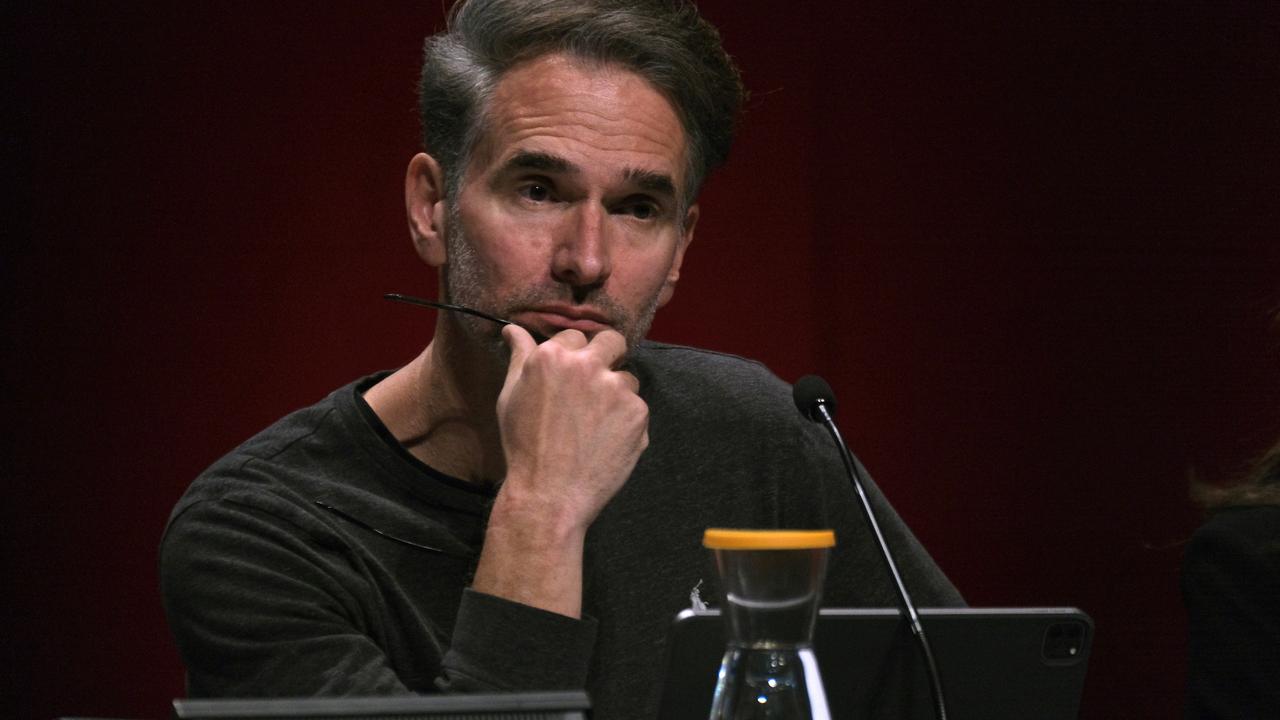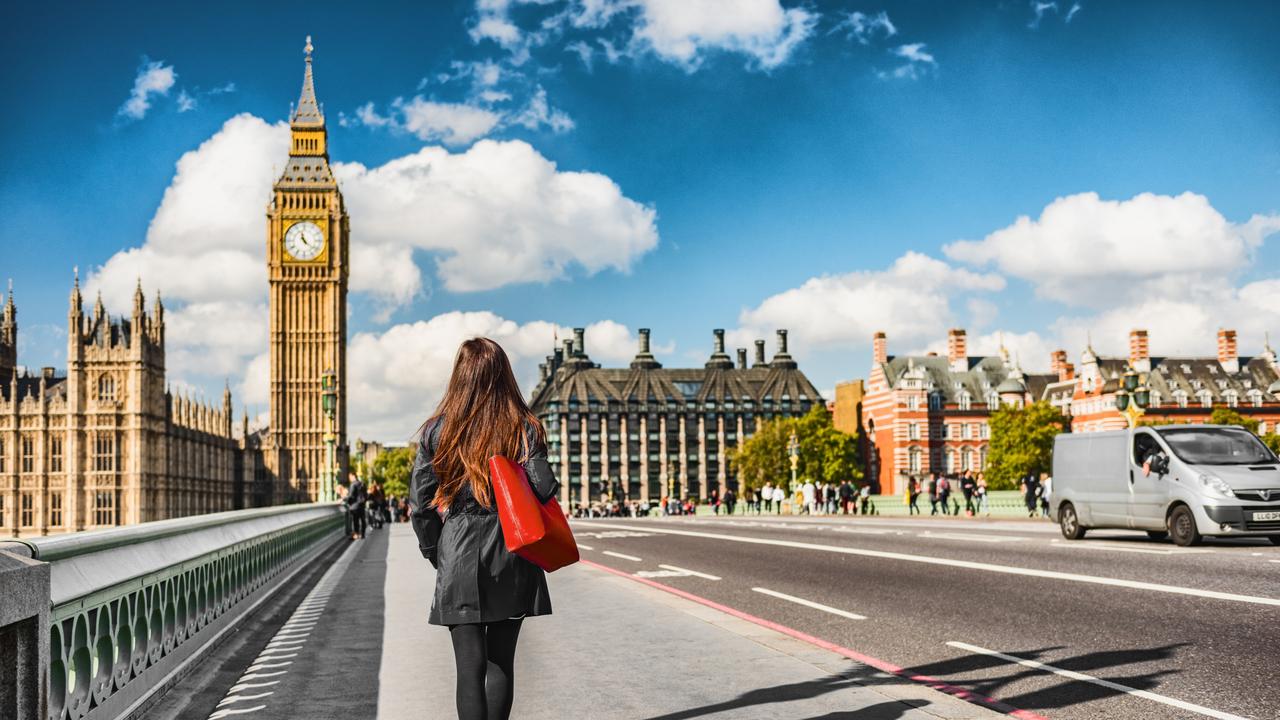Qantas A380 shortage blamed for international flight cutbacks
Offshore maintenance of Qantas A380s is playing havoc with the superjumbo fleet, resulting in cutbacks to international flights.

Qantas’s plans to have all 10 of its A380s back in service by the end of the year have been dashed by backlogs at offshore maintenance facilities, resulting in a series of cutbacks to international flying mid-year.
Despite bringing all of its superjumbos out of pandemic storage in the California desert early last year, two remain in Abu Dhabi for “maintenance”.
A third A380 is being pulled from service to have its interior cabin upgraded and others are due for heavy maintenance leaving Qantas with a scheduling nightmare on international routes.
As a result flight frequency and/or capacity will be trimmed back between July and October on six routes from Sydney and Melbourne to various destinations.
Instead of operating 485-seat A380s on Sydney-Johannesburg as planned from July, Qantas will continue to use a 236-seat Boeing 787 on six flights a week.
Sydney-New York via Auckland will remain at four flights a week, instead of going daily from August and Sydney-Santiago will drop from four to three flights a week.
Sydney-Dallas will also come back from daily to six flights a week, and Sydney-Los Angeles will go daily instead of nine flights a week.
Qantas will switch in some 787s in the place of A380s on Melbourne-Los Angeles with the smaller aircraft doing five flights a week, and the superjumbos two.
Australian Licensed Aircraft Engineers Association federal secretary Steve Purvinas said the problems being experienced by Qantas were due to a lack of investment in maintenance operations over the past 10 to 15 years.
“We saw a period with little or no recruitment, and no more than a token apprenticeship program,” Mr Purvinas said.
“In 2011, they decided to close the facility at Avalon and invest in a facility in Los Angeles, and once you pull down the infrastructure here at home and are entirely reliant on overseas facilities to do the work, you’ve essentially lost control.”
He said the two A380s at Abu Dhabi had been there for over a year, which illustrated the predicament facing Qantas.
“Qantas can’t tell the overseas facilities when they want their aircraft to be fixed, they just have to wait, and they wouldn’t have to do that if investment was made in Avalon for a new hangar 10 years ago, as we asked,” Mr Purvinas said.
“We were quoted $16m, but they went and spent $60m on LA.”
The majority of Qantas aircraft continued to be maintained in Australia, with the A380s an exception due to the relatively small number, a spokesman said.
Head of international cabin crew Nick Bull told employees the issues being experienced by Qantas including workforce and hangar availability, were impacting airlines globally.
“As you know we have eight A380s that we’ve brought back since international borders opened,” Mr Bull said.
“We are planning to have seven A380s flying by early October and will keep you updated as the maintenance checks and cabin upgrades proceed.”

It was expected nine A380s would be back in service by the end of 2024.
Qantas advised that any customers affected by the changes would be contacted with new flight details, or the opportunity for a credit or refund.
When the Covid pandemic erupted in early 2020, Qantas sent all 12 of its A380s to the California desert for storage.
With uncertainty surrounding the travel demand post-Covid, the decision was made to scrap out two of the superjumbos for parts, reducing Qantas’s fleet to 10
A380s remain one of the most popular aircraft with passengers, due to their immense size, four engines and quiet cabins.
But the double-decker jets are set to disappear from the commercial aviation landscape early next decade when airline operators such as Emirates and Qantas plan to retire them.
The lack of a suitable replacement remains a bugbear of Emirates’ president Tim Clark, who has warned current models of aircraft are insufficiently sized to meet demand.
Speaking on the sidelines of last year’s International Air Transport Association AGM, Sir Tim said he had challenged manufacturers to “do the maths” on global capacity without the superjumbos.
“If you take the 380 out of the mix and the next one down is a 777 which is 200 seats lighter, the demand is going to be severely suppressed and prices will rise,” Sir Tim said.






